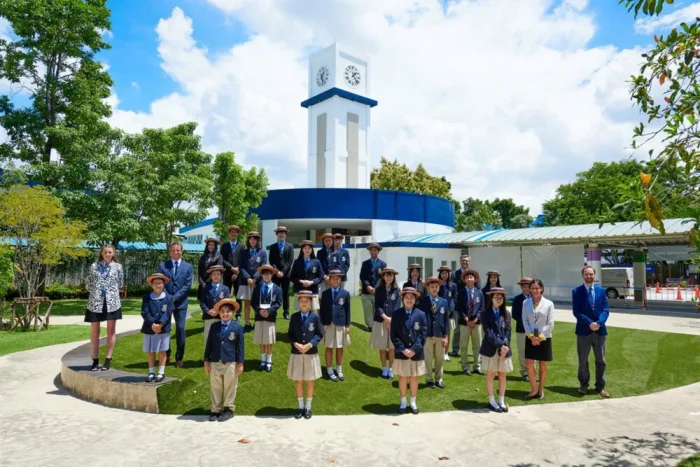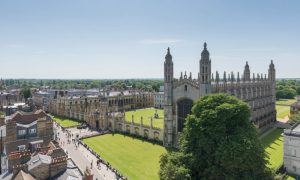In recent years, more and more Chinese families have begun to look to Southeast Asia for educationalimmigrantsPrograms. Especially "Bringing Up BabyImmigration to Thailand"The new trend has become a quiet trend among middle-class families. Compared with the traditional U.S., Canada, Australia and the United Kingdom, Thailand does not have the investment threshold of millions of yuan, but also do not have to go through the complex approval process, but toLow threshold, high cost performance, multiculturalism and international education resources** have won the favor of many parents.
But the question arises: are international schools in Thailand really reliable? What is the quality of teaching? Can children adapt? Today we will focus on these parents most concerned about these issues, to fully analyze "Thailand Education Migration"The Real Picture.
First, the status of Thailand's international schools: a large number, the whole system, the freedom of choice
Thailand is currently home to over 200 international schools, concentrated in the cities of Bangkok, Chiang Mai, Phuket and Pattaya. Among themBangkok has around 70 international schools, making it one of the most densely populated cities in Asia for international education resourcesThe
What's more, Thai international schools have a wide selection of curriculum options to cover:
-
British Curriculum (IGCSE+A-Level)
-
American curriculum (AP, SAT system)
-
IB International Baccalaureate Program (IB PYP, MYP, DP)
-
Chinese-English Bilingual Program (for younger Chinese children)
-
And some German, French, Singaporean and other system schools.
This means that parents have the flexibility to choose the most appropriate teaching mode for their children based on their language ability, college plans, and personality traits.
II. What is the quality of teaching? Teaching staff and language environment are key
Most Thai international schools use all English as the medium of instruction.Teachers are mainly from Europe and the United States, and some of them also have Chinese teachers for Chinese or math courses... Teaching style is based on heuristic, project-based, critical thinking training, encouraging students to express themselves and focusing on competence rather than rote memorization.
From actual feedback, most Chinese students in Thailand have improved their language skills significantly after the adaptation period, especially their English speaking and writing skills. Growing up in such a multilingual and multicultural environment has a significant impact on a child'sGlobal perspective, intercultural communication skills, self-awarenessAll very helpful.
III. International school tuition: medium investment, cost-effective
When it comes to international schools, the biggest concern for many parents is tuition. The good news is thatThai international schools are generally much cheaper than local Chinese international schools, without losing the quality of teaching.
A few examples:
| Name of the school | location | Grade Level Coverage | Average annual tuition fee (RMB) |
|---|---|---|---|
| Bangkok Patana School | Bangkok, capital of Thailand | K-12 | 130,000-180,000 dollars |
| Prem Tinsulanonda | Chiang Mai, second city of Thailand | Full IB program | $100,000 - $150,000 |
| Lanna International | Chiang Mai, second city of Thailand | American-made courses | 60,000-100,000 dollars |
| Regent's International | Bangkok/Pattaya | English Course | 80,000-120,000 dollars |
In comparison, international schools in big cities in China can easily cost 200,000-300,000 a year or even more, and Thailand's international educationMore friendly to working class families, excellent value for money.

IV. Adaptation of the child: language, socialization, cultural integration
Many parents worry that their children will not be able to keep up with the language or will be isolated. In fact, these types of concerns can be alleviated:
-
Language issues: Most schools have EAL (English as Additional Language) programs for non-native English speakers to help them complete their language adjustment in six months to a year.

-
Cultural adaptation: With Thailand's diverse and inclusive society, Chinese children do not feel out of place in international schools, and many of the schools themselves do not have a low percentage of Chinese students.
-
Social Growth: Children at international schools not only interact with students from different countries, but also regularly participate in interdisciplinary projects, group discussions, extracurricular interests, etc...Easier to develop social skills and a sense of teamworkThe
V. Clear path to higher education, more advantageous to study abroad
Diplomas from Thai international schools are commonly used byRecognized by universities in Europe, America, Australia and Canada, and many schools also have college application counseling teams to assist students in planning their pathway to college, preparing for standardized tests and application materials.
In fact, applying to the world's leading schools from Thai international schools, theEasier than the highly competitive International Department or Advanced Placement pathway at home.. Many graduates successfully enter the TOP 100 universities in the UK, US, Australia and Canada, such as UCL, University of Toronto and University of Melbourne.
VI. Benefits beyond education: relaxed environment and low stress for parents
In addition to the teaching itself, Thailand's slow pace of life, warm climate, and relatively good air qualityLess stressful for the family as a whole. Children can be exposed to nature, do crafts, learn to cook, participate in meditation and other non-testing programs after school.A more balanced pace of growthThe
Many Chinese parents living in Thailand say the biggest change is:No more anxiety over exams, no more inward rolls, more harmonious family relationships, happier and more independent children.
Conclusion: Suitable is not the same as perfect, planning is most important
take care of the kidsImmigration to ThailandIt's aRealistic and gentle choicesIt's not the same as an easy "win". It's not the same as an easy "win", but it does provide a win-win solution for more and more middle-class families in both education and life.
Of course, every child and every family is different, it is recommended that before making a decision, we should inspect the school, understand the visa policy, and clearly plan the route of further education, in order to maximize the realization of the ideal state of "education immigration".






